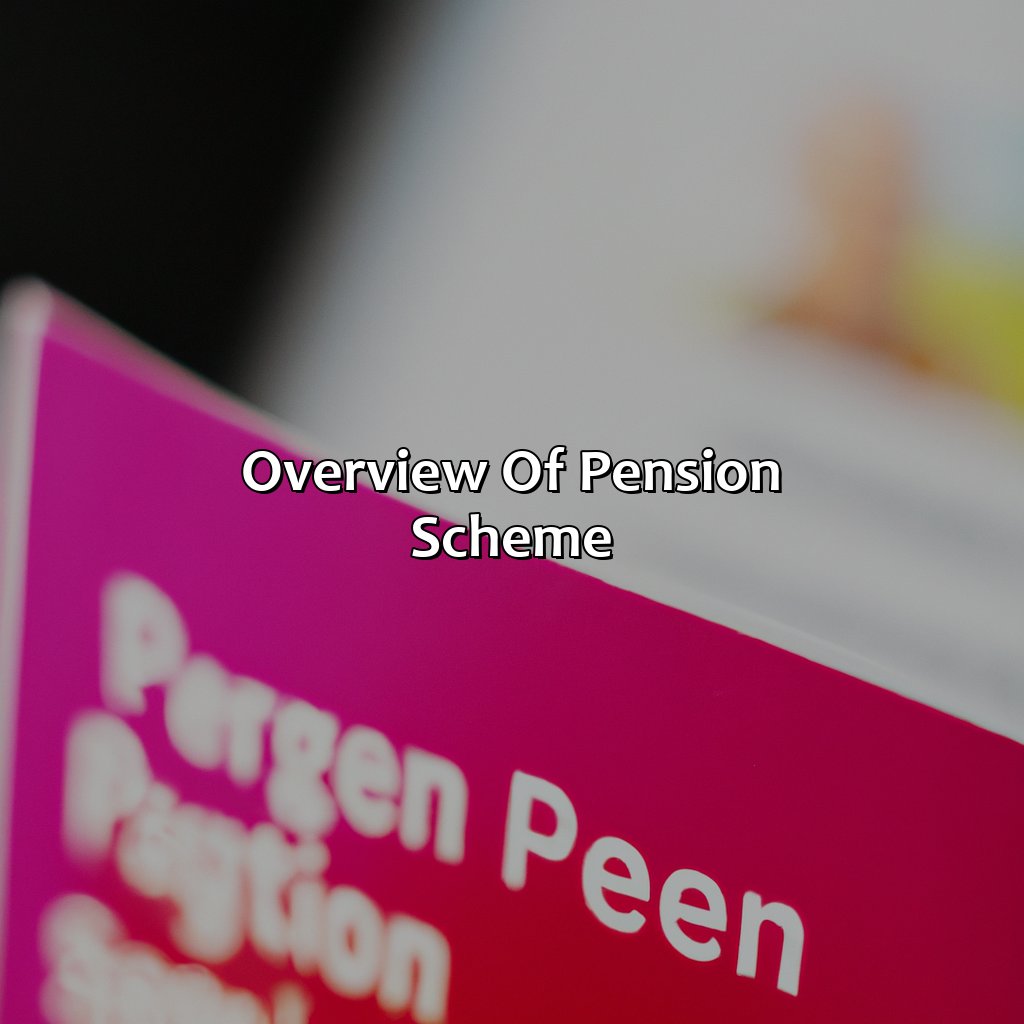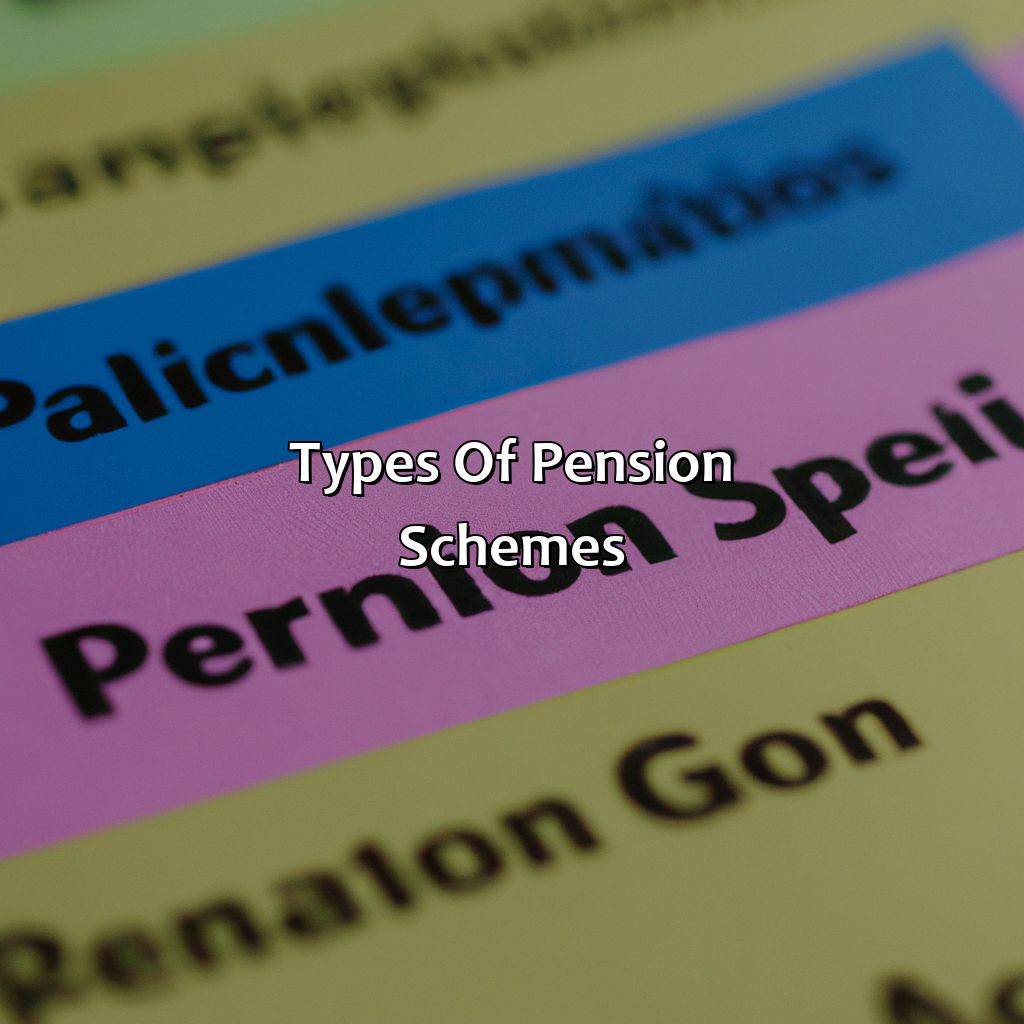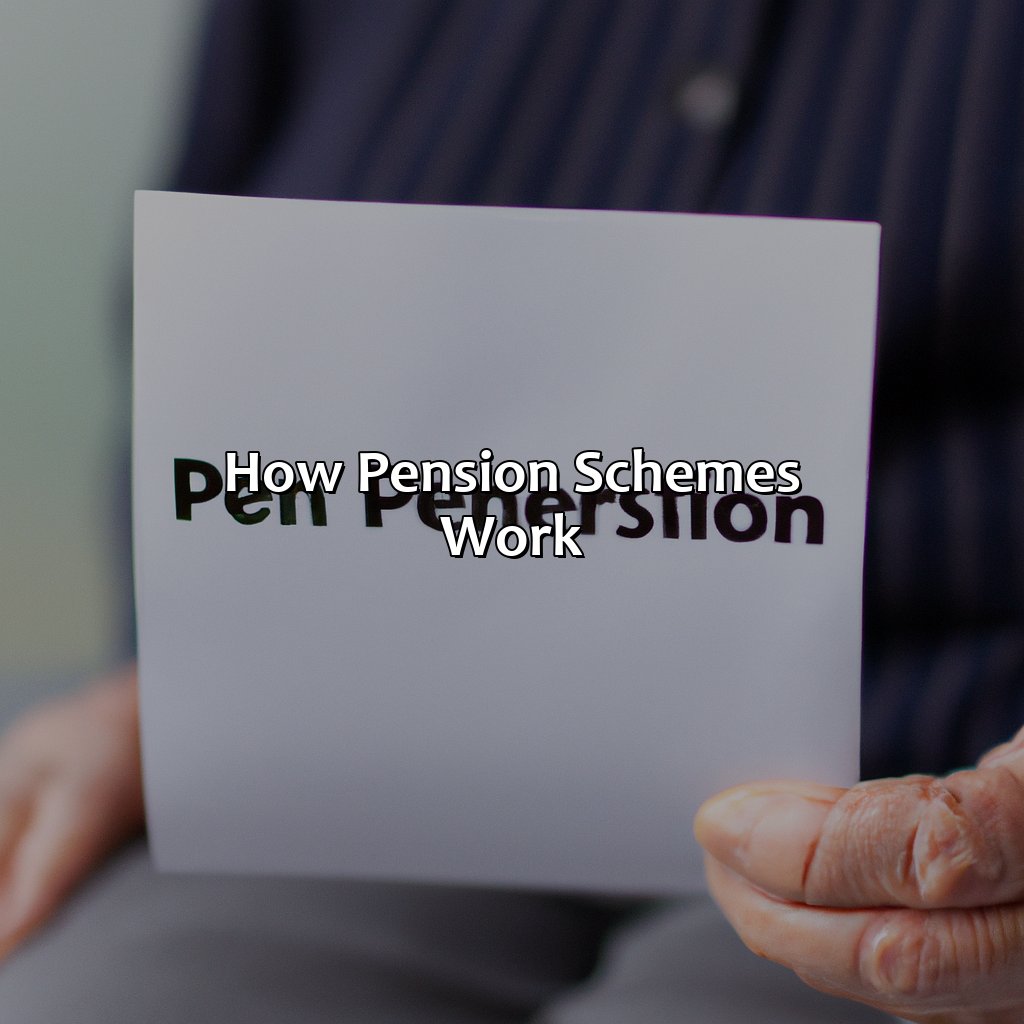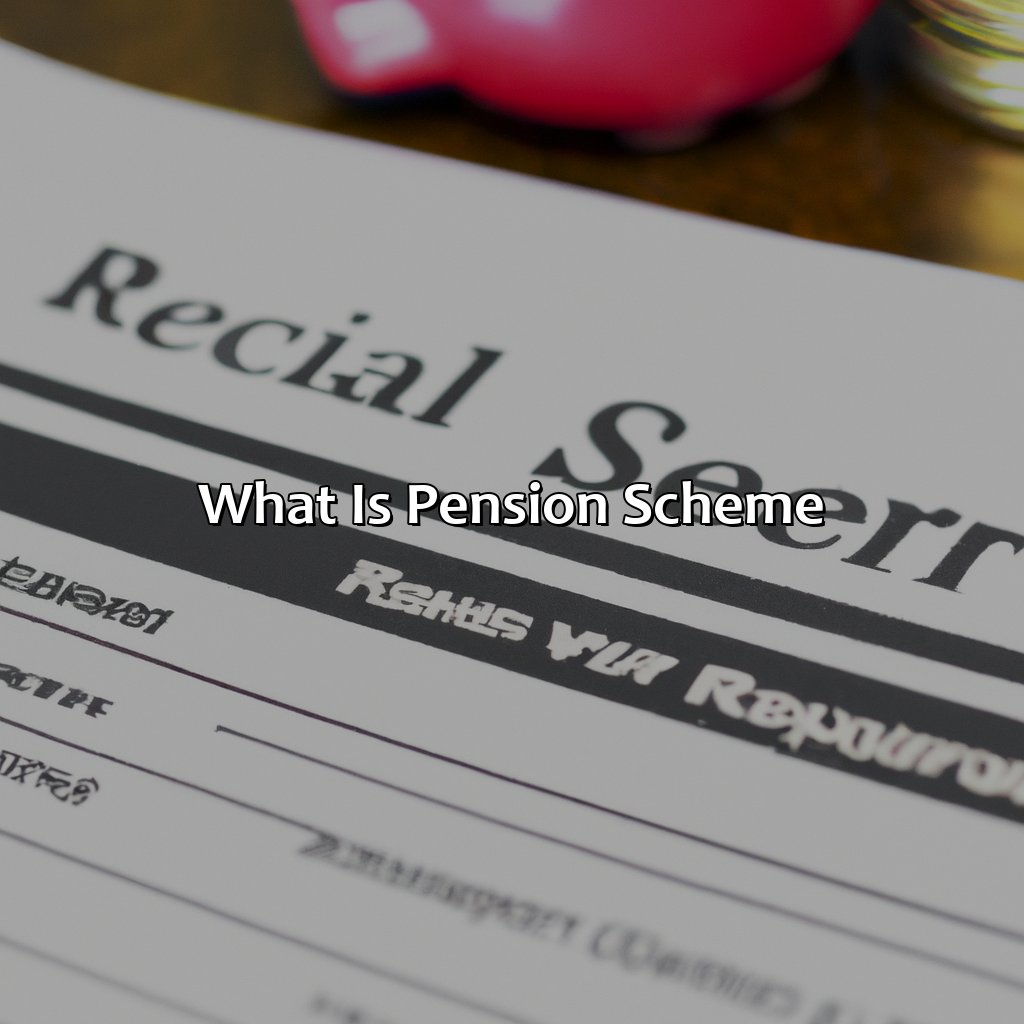What Is Pension Scheme?
Key Takeaway:
- Pension scheme is a retirement plan that helps individuals save money for their future financial needs by making regular contributions during their working years, which are then invested to provide substantial returns when they retire.
- There are two main types of pension schemes: defined benefit pension schemes, which provide a guaranteed retirement income based on the employee’s salary and length of service, and defined contribution pension schemes, which depend on how much money is contributed and how well the investment grows over time.
- Enrollment in a pension scheme is important to ensure that individuals are saving for their retirement years, and the investment of pension funds is managed by a professional team to optimize returns. However, limited access to funds and potential risk of insolvency are some of the drawbacks that need to be considered when investing in a pension scheme.
Are you concerned about planning your retirement? Learn how pension schemes can help you secure your financial future and prepare for retirement. With this article, you’ll gain invaluable knowledge about pension plans and how to make the most of them.
Overview of Pension Scheme
Pension schemes are retirement plans that aim to provide financial support to individuals during their old age. They are designed to accumulate funds throughout one’s working life, which is then paid out as a regular income after retirement. These schemes can be employer-based, government-funded or privately-managed. Pension schemes have become increasingly important due to demographic changes, as life expectancy has risen while the birth rate has fallen. They are a form of long-term investment that offer a degree of financial security in later years.
It is important to note that pension schemes vary in their structure and requirements. Some schemes require employees to contribute a portion of their salary towards the scheme, while others are fully funded by the employer. Pension schemes may also differ in terms of the type of investment they make – some schemes invest in low-risk assets such as government bonds, while others take a higher-risk approach with equities and property. Additionally, there may be different rules regarding when an individual can access their pension, with some schemes allowing early retirement while others have strict minimum age requirements.
To ensure a comfortable retirement, it is recommended to start contributing to a pension scheme as early as possible. This will allow for a longer period of time to accumulate funds and potentially produce a larger retirement income. It is also important to regularly review and adjust pension contributions to account for changes in income and inflation. Seeking the advice of a financial advisor can provide insight into the most suitable pension scheme and investment strategy for an individual’s circumstances.

Image credits: retiregenz.com by Joel Washington
Types of Pension Schemes
To grasp the various pension schemes, look into the Defined Benefit Pension Scheme and the Defined Contribution Pension Scheme. These subsections reveal the different pension plan options.

Image credits: retiregenz.com by James Duncun
Defined Benefit Pension Scheme
This pension scheme offers a defined amount of payout after retirement. The benefits a retiree receives are calculated based on years worked and average salary received. The Defined Benefit Pension Scheme is beneficial as it provides guaranteed payouts, however, employers carry the financial risk in case the fund underperforms.
Members in this type of pension plan have no control over investments or contributions made into the scheme, as opposed to its counterpart, the Defined Contribution Plan. Despite high administrative costs associated with managing and ensuring constant availability of funds for current retirees and future members alike, this plan ultimately guarantees an income stream for employees during old age. Learn more about Keogh Plans – a type of pension scheme designed to provide pension benefits for a certain group of individuals.
Although Defined Benefit Pension Schemes were once prevalent across many industries and countries globally, over time they have become rarer due to their expensive nature and inescapable financial risks that fall onto employers. However, some public sector workers today still receive these schemes as part of their employment package.
Better start contributing now, or you’ll be relying on your collection of old socks for retirement.
Defined Contribution Pension Scheme
One type of pension scheme is based on contributions, known as a plan with Defined Contribution. Employers and employees pay into it; upon retirement age, the retiree claims their income stream from investments made. The amount received depends on the sum of investments and fees deducted.
Under this plan, employers place them in administration and investment risk lies with recipients. Though some companies may contribute extra funds over what the employee has initially contributed, it’s not always the case.
A “default” account allocation may prevail if new retirees neglect to designate an investment-of-their-choice option at sign-up or if they choose high-risk profiles despite being near retirement age.
Many companies are turning toward Defined Contribution Plan schemes as they are less expensive than Defined Benefit Plan payouts to retirees.
According to Investopedia, many financial advisors suggest contributing at least 10% to a defined contribution pension scheme in which you’re enrolled in your early employeeship stages. Learn more about S pension scheme and start securing your future today.
Why work for a living when you can work for a pension scheme?
How Pension Schemes Work
Need to understand pension schemes? It’s all about enrollment, contributions, investment, retirement and distributing benefits. Get to grips with it by looking at these sub-sections. They’ll give you more insight into how pension schemes work!

Image credits: retiregenz.com by David Woodhock
Enrollment and Contributions
Pension Plan and Payment Processing
Enrollment into a pension plan follows an employee completing required paperwork and submitting their personal details to the employer. Contributions are either deducted from an employee’s paycheck or paid by the employer directly into the scheme.
- Enrollment requires completion of paperwork
- Contributions are deducted from paycheck or employer
- Payment goes towards pension scheme
It is important to note that some employers may offer schemes with varying contribution percentages which depend on an employee’s salary and other factors. Some employers may also match contributions made by the employee.
When it comes to payment processing, pension contributions are typically put into long-term investment funds, allowing for potential growth of the fund over time. These funds can be managed by external fund managers or through in-house management teams.
Pro Tip: Ensure to stay up-to-date with your account information including any changes in salary, employment status, or beneficiaries as this will have an effect on future pension payments. Who needs a crystal ball when you’ve got a pension fund manager? They’re the ultimate fortune tellers of the investment world.
Investment of Pension Funds
The deployment of pension funds is vital to support individuals after their retirement. The process of investing these funds involves a Semantic NLP variation of the
Pension funds are invested in several asset classes like equities, bonds, property, commodities, among others. To maximize yields while minimizing risks, the pension scheme s investments are diversified across various industries and sectors of the economy. The success of the investment strategy rests on proper portfolio management that also includes risk analysis and market fluctuations.
It’s essential to appreciate that one size does not fit all in securities management since the individual requirements and financial goals differ from one person to another. That said, it’s crucial to receive professional advice when investing your pension savings. It allows you to make informed decisions by selecting customized strategies that suit your particular circumstances and desired outcomes. What percentage of the stock market is owned by pension funds?
Some suggestions include considering environmental, social and governance factors while selecting investments options; this has become increasingly important in recent times due to global climate change concerns. Other tips could be choosing mutual funds instead of solely focusing on direct stocks or obtaining professional assistance from accredited pension advisors appointed by the regulatory bodies overseeing the pensions industry. By leveraging such methodologies over time, individuals can ensure their ability to see through their twilight years comfortably.
You’ll finally have time to pursue your dreams once you retire…unless your dreams involve buying a yacht, in which case you better start saving more for your pension scheme.
Retirement and Distribution of Benefits
When it comes to the conclusion of one’s career, retirement and dissemination of compensations become significant. Pension schemes are designed to cater for such cases. Retirement and Allocation of Rewards by pension strategies enables individuals to access a regular revenue flow in their non-earning years. This can be either in the form of lump sum payments or annuities, based on the type adopted by a particular pension system.
Pension laws have specific criteria determining when benefits can start receiving depending on age limits and other factors. The distribution mechanisms vary from country to country, but they all share common objectives – financial self-sufficiency post-retirement alongside a sound standard of living. Such plans may involve employers contributing directly to employees’ funds through defined contribution plans like IRAs or 401k programs.
It is crucial to consider how long retired individuals will require income since pension allowances can last a lifetime. Compensations may even go beyond the retirees themselves if heirs accept this product upon death. To learn more about what is ER pension, visit our website.
A study conducted by World Health Organization (WHO) revealed that as of October 2021, life expectancy around the globe has risen by six years since 1990.
Sign up for a pension scheme and enjoy the benefits of a future where you can retire from work, while still being able to afford avocados.
Benefits of Pension Scheme
Comprehend the perks of a pension scheme? You gotta learn how it runs and what it needs from you.
Tax advantages, retirement earnings and boss contributions are some answers to get the most from your pension plan.

Image credits: retiregenz.com by David Washington
Tax Benefits
Pension plans come with various tax benefits, such as tax-free contributions, tax-free investment growth and tax relief on contributions. These benefits stem from the government’s initiative to encourage citizens to save for their retirement.
In addition to the aforementioned benefits, pension schemes also provide tax exemptions on withdrawals during retirement years. This helps people manage their finances and provide financial security throughout their golden years.
Did you know that the Indian government provides an additional deduction of up to INR 50,000 under Section 80CCD (1B) for pension contributions? (Source: Economic Times)
Retirement income: because living off of cat food and old magazines isn’t as glamorous as it sounds.
Retirement Income
As people reach the end of their careers, one of their main concerns is how they will manage financially during retirement. Pension Scheme is a system set up to provide Retirement Income in the form of periodic payments to individuals who have subscribed to it over a period of time. This helps retirees ensure that they receive a steady income after ending work and facilitates better financial planning.
The primary advantage of having a pension scheme is that retired individuals can ensure significant cash inflows when they need it most. They no longer have to worry about running out of money or compromising their quality of life due to financial constraints. The scheme also helps older people maintain some degree of social and economic independence.
Ensuring that there is enough money saved for retirement often requires lifelong planning and discipline. One should start thinking about it as early in their work life as possible. It is essential to plan ahead, determine goals relating to standard of living, estimate future expenses and income sources, and then create the right investment strategy for securing EE pension.
Safeguarding your future with pension scheme benefits enables you to remain confident even during tough times by providing financial security and independence during retirement. So don’t miss out on the opportunity because FOMO (fear of missing out) can be a source o regret later on. Joining pension schemes goes a long way in ensuring a happy, worry-free retirement!
Your boss might not give you a raise, but at least they’ll contribute to your retirement fund- it’s like a little pat on the back before you say goodbye to the 9 to 5 grind.
Employer Contributions
Employer Fund Contributions
The contributions made by employers are crucial to the success of a pension scheme.
- They offer financial support to employees at the time of retirement, ensuring their future is financially secure.
- Employer contributions are also tax-deductible, which is beneficial for both parties involved.
- The more an employer contributes towards the pension scheme, the more they can attract and retain high-quality employees.
It’s important to understand that employer contributions differ according to each scheme s agreement and requirements.
Offering competitive rates can create job satisfaction and employee loyalty, which will improve productivity in the long run.
Think of a pension scheme like a retirement savings account, except instead of earning interest, you earn wrinkles and a sudden urge to talk about the weather.
Drawbacks of Pension Scheme
Understand the risks of a pension scheme! To get the most out of your retirement savings, it is important to consider the limits of accessing your funds. Also, be aware of the potential danger of bankruptcy.

Image credits: retiregenz.com by Yuval Duncun
Limited Access to Funds
The pension scheme’s funds have limited accessibility, leading to issues for beneficiaries. Even if it is an excellent investment medium, the assets cannot be accessed before a set age or completion of the service term. This constraint can cause significant financial pressure during emergencies.
Moreover, individuals who leave their job before salary retirement may not take their accumulated benefit from the pension fund immediately. Instead, they must wait for a fixed period as defined by relevant authorities. If you are wondering how do I find my pension information, there are various online platforms and government agencies that can provide you with the necessary information.
Therefore, beneficiaries should consider opting for other investment channels besides pension schemes. Investments such as real estate and government bonds offer financial security with better flexibility and liquidity than a pension scheme. However, always research and analyze different options’ long-term benefits before investing.
Looks like the only thing pension scheme is insuring is your potential risk of insolvency.
Potential Risk of Insolvency
Pension plans involve a chance of bankruptcy. Companies that offer pension schemes to their employees must put aside a certain amount in a fund, with the intention of covering the expenses when an employee retires. Unfortunately, if an organization undergoes financial stress and files for bankruptcy, their workers could lose their pensions. This is called the ‘Potential Risk of Financial Inadequacy.’ It is concerning for employees who have invested their time and resources into the firm.
The collapse of Enron in 2001 serves as an example. The company had an intricate pension system to secure its employees’ futures, but due to fraudulent accounting practices and misconduct, the company filed for bankruptcy, causing around 20,000 employees to lose their pension benefits. The collapse of Enron resulted in legislation seeking to restructure financial management roles concerning pension funds.
It’s essential for employees to be aware of this possibility and take measures to safeguard against it by distributing investments across several sources instead of relying solely on one source. Additionally, employers must maintain transparency regarding the funding process and take precautions while investing funds in accordance with regulatory guidelines since securing workers’ pensions is not only ethical but also business-savvy given today’s workforce dynamics.
To understand pension schemes in the US, it’s important to know how many pension plans are there in the US and what they are.
Some Facts About Pension Scheme:
A pension scheme is a type of retirement plan that provides regular income to employees after they retire. (Source: Investopedia)
Employers often contribute to pension schemes on behalf of their employees, but employees may also be required to make contributions. (Source: The Balance)
Different countries have different types of pension schemes, such as defined benefit and defined contribution plans. (Source: Pension Wise)
Pension schemes can help employees save for retirement in a tax-efficient way. (Source: Money Advice Service)
It’s important to regularly review and monitor your pension scheme to ensure you’re on track for a comfortable retirement. (Source: Citizens Advice)
FAQs about What Is Pension Scheme?
What is a pension scheme?
A pension scheme is a retirement plan that helps individuals accumulate savings over a period of time for financial security during their retirement years. These schemes are usually funded by contributions from employees, employers, or both.
Who is eligible for a pension scheme?
Eligibility for a pension scheme varies depending on the specific plan. In a workplace pension scheme, for example, employees are typically automatically enrolled and must opt out if they do not wish to participate. Generally, anyone who wants to save for retirement can also set up a personal pension scheme.
What types of pension schemes are there?
There are two main types of pension schemes: defined benefit and defined contribution. A defined benefit scheme promises a specific level of income for life, while a defined contribution scheme accumulates a pot of money that can be used to provide retirement income.
What are the advantages of a pension scheme?
A pension scheme offers several advantages, including tax benefits, the ability to accrue savings over time, and the peace of mind that comes with having a source of income in retirement.
How much should be contributed to a pension scheme?
The amount that should be contributed to a pension scheme depends on individual circumstances, such as income level, retirement goals, and investment preferences. As a general rule, financial experts recommend contributing at least 10% to 15% of pre-tax income to a pension scheme.
What happens to a pension scheme if someone dies before retirement?
If someone dies before retirement, the fate of their pension scheme depends on the specific plan. In some cases, beneficiaries are entitled to receive a lump sum or ongoing payouts. In other cases, the pension scheme may be dissolved entirely. It’s important to check the plan’s rules and regulations to understand how it works in the event of death.
 Checkout this IRS Loophole
Checkout this IRS Loophole 
